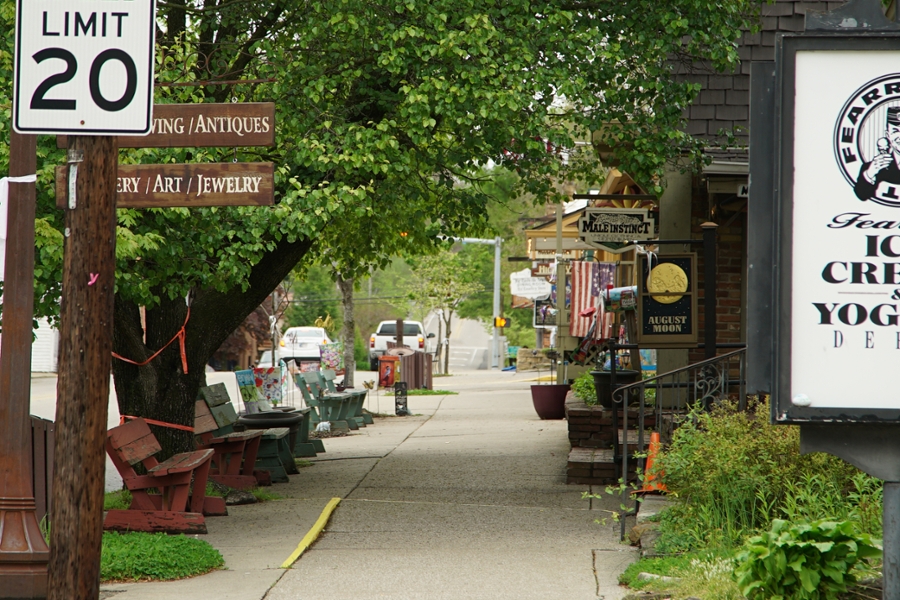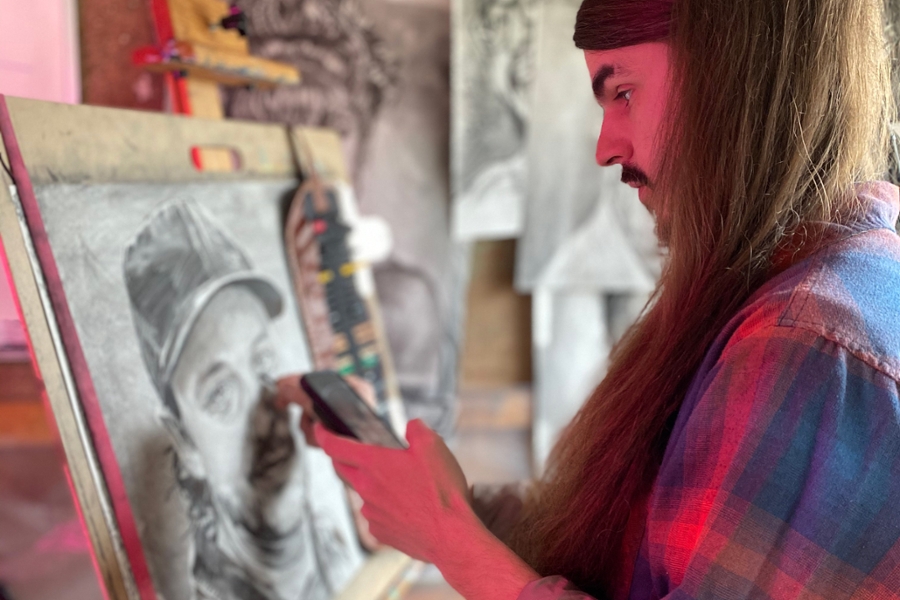Many people in Bloomington don’t even know it’s there. All that’s visible from the road is a Central Asian-style archway. But tucked behind the treeline is the Tibetan Mongolian Buddhist Cultural Center (TMBCC), an entire compound with meticulously crafted artwork and architecture.
And while the center is relatively under the radar in Bloomington, the TMBCC has several initiatives underway to make a big impact back home.
Arjia Rinpoche directs the center. A Tibetan of Mongolian descent, Rinpoche was named the reincarnation of a previous holy person when he was just two years old.
Rinpoche was afforded the opportunity to become a monk and receive a Buddhist education.
 Arjia Rinpoche. (Photo: Payton Knobeloch)
Arjia Rinpoche. (Photo: Payton Knobeloch)
When Rinpoche was eight years old, political tensions with the Chinese Communist Party sent him on a 40-year period in which he experienced forced labor, political manipulation, and hid the secret of his Buddhist identity.
Ultimately in 1998, with the help of the Dalai Lama, Arjia Rinpoche escaped from Beijing and sought refuge in the United States. He then founded the Tibetan Center for Compassion and Wisdom in Mill Valley, California.
The Dalai Lama’s older brother, Professor Thubten Jigme Norbu, officially began directing what was previously known as the Tibetan Cultural Center in 1978. In the years leading up to the center’s establishment, Professor Norbu taught Tibetan studies at Indiana University.
In 2005, due to Professor Norbu’s failing health, the Dalai Lama asked Rinpoche to take over and begin directing the cultural center. Rinpoche accepted the offer and renovated the center.
 Welcome to the Tibetan Mongolian Buddhist Cultural Center. (Photo: Naphtalia Ruth)
Welcome to the Tibetan Mongolian Buddhist Cultural Center. (Photo: Naphtalia Ruth)
“His Holiness [the Dalai Lama] said, ‘The center is already here, so you should have more interfaith prayers and programs because you can include other religions and invite more diversity,’” said Rinpoche.
After speaking to the Dalai Lama, Rinpoche’s connection to Mongolia and Tibet led him to rename the center the TMBCC.
“Lots of Mongolians come to the United States. They are staying here and they should have their own place,” stated Rinpoche. The connection to his people led him to establish a number of different charitable initiatives.
“People said you should do something for the Mongolian children because they have a serious cancer problem. So then we started the charity,” said Rinpoche.
Beginning in 2009, Arjia Rinpoche built a six floor Cancer Care Treatment Center connected to the Maternity Hospital in Ulaanbaatar, Mongolia. Through the initiative, Rinpoche provided supplies and equipment to the families with children suffering from cancer.
“In winter the pollution is horrible,” Rinpoche expressed. “Mongolia is a higher [elevation] place, usually they are nomads.”
Rinpoche mentioned that the higher elevation, the lack of organic vegetation and lack of clean water may be what is leading to higher cancer rates in Mongolia. Pollutants in the environment, radiation, tobacco use, and alcohol use are a few of the other causes as well.
Increased susceptibility to cancer can also be hereditary. According to The UB Post, the all cancer-rate for females in Mongolia is the highest in the world.
While Rinpoche was able to secure financial aid from individuals, charities, non-governmental organizations and proceeds from his memoir, Surviving the Dragon, the Mongolian government was unwilling to offer any support.
 Tibetan Mongolian Buddhist Cultural Center. (Photo: Naphtalia Ruth)
Tibetan Mongolian Buddhist Cultural Center. (Photo: Naphtalia Ruth)
Along with the Cancer Care Treatment Center, Rinpoche established the Multi Education Editing Center in India for refugees. “A lot of educated people from Tibet escaped from Tibet to India to settle down there,” said Rinpoche.
This initiative provided material for them to continue their studies after seeking asylum in India. Dictionaries, computers, reading materials, and food were sent.
The initiative garnered a lot of support during the initial startup phase. But the refugees then left India to move on to different areas, leaving Arjia Rinpoche to pursue other charitable projects.
Rinpoche phased out the Multi Education Editing Center in favor of another India-based project. Rinpoche and his students began working on Libraries for Children of Tibetan Refugees, sending books to children in Dharamsala.
“We are still supporting them, now [in] a different style,” mentioned RInpoche. The project has aided two schools by purchasing 300 books for each.
As the families and children begin to leave India and travel to the U.S., Rinpoche supports them with his most recent initiative, a tour group. He aids the travelers by scheduling visas, tours, and housing.
The groups will be involved in giving lectures and teaching meditation, yoga, and artwork while in the US.
 Tibetan Mongolian Buddhist Cultural Center. (Photo: Naphtalia Ruth)
Tibetan Mongolian Buddhist Cultural Center. (Photo: Naphtalia Ruth)
Currently Arjia Rinpoche is seeking support for a school he is planning in the near future. The school will offer students in remote areas of Mongolia the opportunity to receive an education.
“The problem is the one big city, which is their capital,” said Rinpoche, “The capital is very crowded.”
The overcrowding in the capital is due to the chance at more opportunity for a better education, job, and healthcare.
With Arjia Rinpoche continuing his work as the director, the Tibetan Mongolian Buddhist Cultural Center will continue to provide international service and charity from their Bloomington-based center.
“If you go to remote areas they don't have anything,” expressed Rinpoche, “They don't have a chance to go to school. We just give some kind of a chance to them.”
Get to know Arjia Rinpoche through his interview with WFIU's Profiles.




